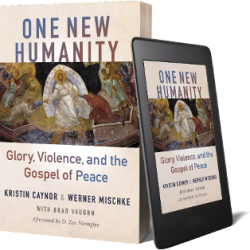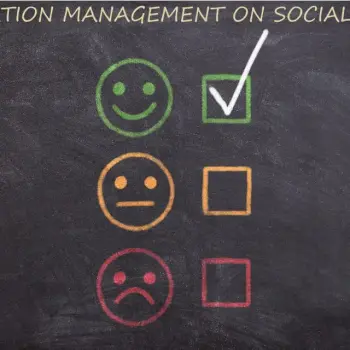 After the 2017 Honor-Shame Conference in Wheaton, Jayson Georges knew the book that needed to be written. This past fall, IVP Academic published his Ministering in Patronage Cultures: Biblical Models and Missional Implications.
After the 2017 Honor-Shame Conference in Wheaton, Jayson Georges knew the book that needed to be written. This past fall, IVP Academic published his Ministering in Patronage Cultures: Biblical Models and Missional Implications.
In this series, we’ve highlighted several workshop leaders and plenary speakers at the upcoming Honor-Shame Conference in June 8-10, 2020. Georges will open the conference with his plenary session titled “Saving Ourselves from Shame.”
In this post, we take a closer look at Georges’ new book. As I’ve said previously, the subject is probably is the most overlooked aspects of honor-shame cultures.
Georges Doesn’t Patronize Readers
If you’ve read Georges, you know that he writes with a simplicity envied by other authors (certainly by me). He provides numerous illustrations and applications to supplement his thoughtful interaction with the Bible. Practitioners are the primary intended audience of this book. Still, academics will find Georges’ framework and integration helpful.
Georges covers a lot of ground in less than 180 pages. The following summarizes each section.
Chapters 1–3 address cultural issues regarding patronage. What is patronage and how does it work? How is patronage expressed in relationships? Why exactly is patronage so frustrating for Westerners? These chapters develop a general cultural model of patronage while also observing some ways patronage can vary across cultures. This framework helps us understand the dynamics present in socioeconomic systems of various Majority World and biblical cultures.
Chapters 4–6 examine biblical models of patronage. How did biblical figures engage relationships in a cultural context governed by patronage? Yahweh, Jesus, and Paul did not reject the system of patronage. They utilized patron-client relationships for kingdom purposes but not without transforming the model in key ways. Biblical patronage, as we see in their examples, has three main characteristics: it centers upon God, brings life to all, and gives gifts to unworthy recipients.
Chapters 7–9 articulate theological truths in light of patronage. How does patronage illuminate our theology of God, salvation, and sin? Since patronage dominated the social world of first-century Christians, it significantly shapes New Testament theology. Patronage helps explain the very nature of the gospel.
Chapters 10–12 unpack the missional applications of biblical patronage. How and when should Christians engage patron-client relationships? Which positive elements can be adopted? How should negative elements be transformed? How does patronage apply to our personal lives and ministries? A biblical paradigm of patronage has profound implications for relationships today.
What is “patronage”?
The word “patronage” can sound obscure or archaic to many people. As a result, the concept could feel irrelevant at best, a term of corruption at worst. Georges wastes no time defining and explaining what he means by “patronage.” He says,
Patronage is generally defined as a “reciprocal, asymmetrical relationship.” Each word in this definition denotes the three main aspects of patronage. First, patronage is a relationship, not a financial or legal arrangement. Patronage involves an enduring parent–child like commitment, not a one-time financial contribution or business deal. …
Also, the relationship of patronage is reciprocal. There is a mutual exchange of resources. Each side in the relationship gives something, whether material (e.g., money, protection) or social (e.g., loyalty, praise). This in turn creates an expectation, and even moral obligation, that the receiver will return the gift and repay the debt. Each side benefits because the other side has a moral obligation to give.
Finally, these reciprocal relationships are asymmetrical, or unequal. The patron has a higher social status; the client is not a peer. The difference in status is an inherit aspect of the patron-client relationship…. (p. 13)
Understood in this way, we discern “patronage” relationships everywhere. Majority world people are simply more aware of them than typical Westerners. The book surveys various examples of patronage relationships. These include government-citizens, host-guests, and donor-recipients. In the Bible, Jesus acts as a patron to the centurion (Luke 7:1–10).
Anticipating objections, he spends several pages elaborating on the morality of patron-client systems. Georges directly addresses Western perceptions and frustrations with such systems. He says, “The common Western refrain ‘They just want money, not a relationship” reveals a deep-seated cultural assumption: money and relationships are distinct’” (p. 31). The book helpfully elucidates much of the inner logic governing reciprocity in most majority world contexts.
Biblical and Theological Contexts
The middle two sections (chapters 4–9) are far too packed to address here in detail. Every chapter deserves a separate post. Georges explores ways that the Lord serves as Israel’s patron as well as patronage dynamics affecting Paul’s ministry. Readers will enjoy a historical survey of church historians as they have employed the theme of God as patron.
I suspect many readers will eagerly turn to chapter 9 (“Salvation as Patron”). He opens in this way:
God is the divine patron who deserves praise, but ungrateful human clients have insulted his honor. Sin separates people from God’s benevolence. But God has acted through Jesus to repair his honor and reconstitute the patron-client relationship with his creation. To explain this divine salvation, New Testament authors use the language and concepts of patronage. Biblical salvation follows the paradigm of patronage—humans receive God’s benevolent gift(s), and God gets praise and loyalty from his grateful clients.
The key words that early Christians used to explain divine salvation came from the social world of patronage and benefaction. (p. 91).
Throughout the chapter, George’s ability to integrate a wide breadth of scholarship is evident.
In agreement with writers like Matthew Bates, Georges contends,
“the word pistis is not primarily internal emotions or cognitive assent, but a sense of covenant loyalty and allegiance. For this reason, the concepts ‘faithfulness,’ ‘loyalty,’ and ‘allegiance’ may better capture the biblical notion of pistis” (p. 99)
What are Missiological Implications?
The final section of the book highlights areas of application. Georges does not urge readers to blindly accept any and all patron-client systems. Rather, the church should first understand cultural expressions of patronage and reflect critically on ways they can reflect biblical ideals for healthy relationships.
He states, “Patronage is not a system of dependence, but an acceptable model of interdependence. Functioning as a patron (or client) is an acceptable way to honor and love people” (p. 109). In the end, we are talking about relationships. The various applications will challenge many Western readers who are no accustomed to embracing enduring relational bonds. Commitment is more important than quick fixes.
Georges rightly notes how Westerners and Majority world believers often have different expectations when they hear the word “partnership.” For this reason alone, readers will benefit from this section. Misaligned expectations undermine countless “partnerships.”
Among other topics discussed in this final section include discipleship, spirituality, mission, and pastoral leadership.
Let me put it this way: if you like the things I talk about on this site, you’ll love this book. Enjoy!
Jayson will be the opening plenary speaker at the upcoming Honor-Shame Conference in June 8-10, 2020.
For related posts concerning
- Chinese cultures, click here.
- God as patron, click here.












